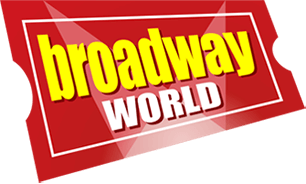IMAGES OF ATHEISM: THE SOVIET ASSAULT ON RELIGION Opens At Museum Of Russian Icons On May 5
Karl Marx's dictum that “Religion is the opium of the people” permeated official culture and everyday life in the former USSR.
![]()
The Museum of Russian Icons presents Images of Atheism: The Soviet Assault on Religion, May 5 - October 2, 2022, an exhibition exploring the role of visual propaganda in the Communist Party's seven-decade war against religion.
Karl Marx's dictum that "Religion is the opium of the people" permeated official culture and everyday life in the former USSR. Beginning in the early 1920s, the Soviet state waged an aggressive media campaign against religion and its institutions, blitzing the population with a steady stream of visually persuasive graphic materials.
With their eye-catching design, strident slogans, and stereotyped characters, the posters and publications of Soviet atheism demonized the world's religions and jeered at those who practiced them. Above all, they appealed to young people by promising a new world of abundance and moral values replacing the superstitions and injustices of the past. Intended mainly for domestic consumption, this remarkable campaign to eradicate faith is among the least known aspects of Soviet visual culture.
The exhibition, curated by Dr. Wendy Salmond, shows the shifting strategies deployed in the Soviet war on religion, at times appealing to science and reason, at others stoking fear and resentment, or exposing individual expressions of faith to ridicule.
Among the exhibit's highlights are a virtual "Godless Corner" showing how atheist materials were to replace icons in the public space; a rare portfolio of antireligious alphabet cards targeting school children; and posters from the Brezhnev era meant to stem the growing religiosity of Soviet citizens as communism approached its end. Uniting the images from across this seventy-year span is a visual language of right and wrong, us and other, whose coercive power can still be felt today.
ABOUT THE CURATOR
Dr. Wendy Salmond, an art history professor at Chapman University in Orange, California, is a scholar of Russian and early Soviet art, architecture, and design. She is particularly interested in exploring the intersection of diverse cultural traditions in Russia and in the formation of national identity. Dr. Salmond, who received her PhD at the University of Texas at Austin, has been a guest curator of exhibitions at Hillwood Museum and Gardens in Washington DC (Tradition in Transition: Russian Icons in the Age of the Romanovs, 2004) and The New York Public Library (Russia Imagined, 1825-1925: The Art and Impact of Fedor Solntsev, 2006). Her publications on Russian art include Arts and Crafts in Late Imperial Russia, Treasures into Tractors: The Selling of Russia's Cultural Heritage, 1918-1938, Tradition in Transition: Russian Icons in the Age of the Romanovs, and most recently, Eternity in Low Earth Orbit: Icons on the International Space Station. She is the editor of the Journal of Icon Studies, published by the Museum of Russian Icons. Her current book project is Russian Icons in America. The Fate of Orthodox Painting, 1917-39.
EXHIBITIONS CURRENTLY ON VIEW
Pysanka: Symbol of Renewal
Through July 24, 2022
In support of the Ukrainian people, The Museum of Russian Icons reinstalled Maine-based contemporary artist Lesia Sochor's Pysanka: Symbol of Renewal, an exhibition inspired by the beautiful tradition of intricately decorated Ukrainian Easter egg painting. Three new works created in response to the current crisis in Ukraine are featured in the exhibition.
Tea is for Tradition
Through October 2, 2022
The objects associated with Russian tea are tactile reminders of this important tradition and evoke warmth, home, and family. Much of tea's popularity is owed to Russia's literary greats and decorative artists, for it is in their craft that tea becomes immortalized as a central aspect of the Russian identity. This mini-exhibition in the Museum's lobby explores the permeation of tea culture in Russian art, craft, and literature.
ABOUT THE MUSEUM
The Museum of Russian Icons inspires the appreciation and study of Russian culture by collecting and exhibiting one of the world's largest collections of Russian icons - sacred paintings used for worship in the Orthodox tradition. With more than 1,000 icons and related artifacts spanning six centuries, the Museum offers a unique and personalized experience rich with art, history, and culture.
The Museum serves as a leading center for research and scholarship through the Center for Icon Studies and other institutional collaborations. It is the only Museum in the US dedicated to Russian icons, and it is the largest collection of icons outside of Russia.
Visit the website, www.museumofrussianicons.org, home of the Online Collection (including research papers on individual icons), a virtual tour of the Museum, the Journal of Icon Studies, and the British Museum's Catalogue of Byzantine and Greek Icons.
Videos

